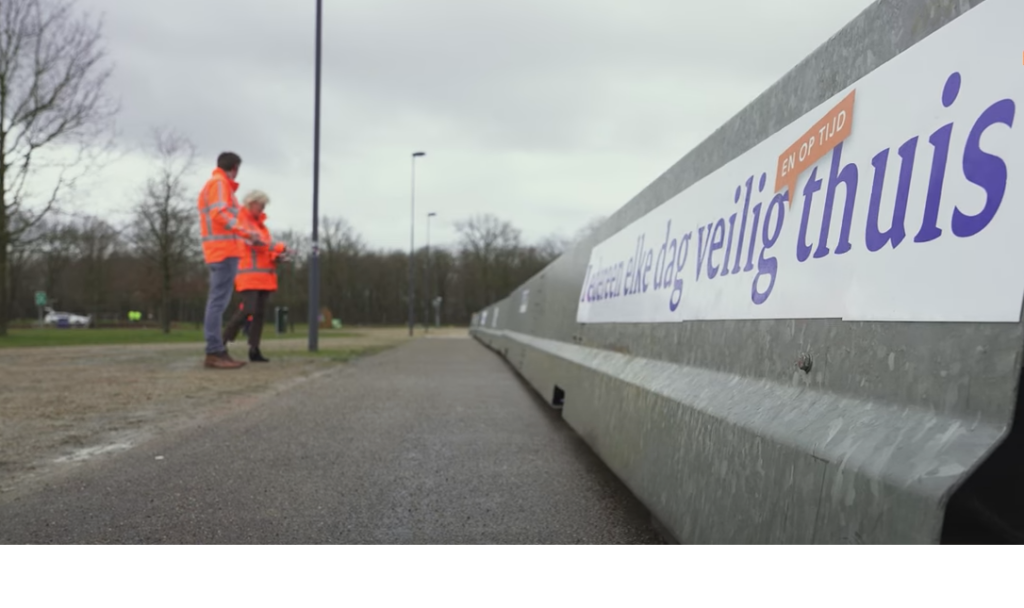With the Go-Barry, lanes can be safely closed and released again. The barrier moves on caterpillar tracks and can be controlled remotely.
Rijkswaterstaat, in collaboration with Boskalis Nederland, is using the Go-Barry for the first time during the work on the A2 near the Maas bridge near Wessem. The Go-Barry is a smart 200 m movable traffic barrier that can be controlled remotely. It is the first time worldwide that this innovative traffic barrier has been used. The idea has been introduced before and tested in a smaller form. Go-Barry has now been further developed and presented in this new shape and length.
With the Go-Barry, lanes can be safely closed and released again. The barrier moves on caterpillar tracks and can be controlled remotely. The Go-Barry moves along with the work and does not have to be assembled and dismantled again and again. This will shorten work periods and create more workable hours. The Go-Barry can be set up in many places in a safe place away from traffic. In addition, the closure of an entire lane can be done within 2 minutes from the lane itself.
More safety, less nuisance
The use of the Go-Barry also improves the flow of traffic and accessibility around work.

'Deploying the Go-Barry is a breakthrough in smart and dynamic road security. Working on the road is safer because road workers are physically shielded from traffic. After the work, the lane can immediately be returned to traffic, without compromising on safety. We are therefore very proud to be able to use this innovation on the A2 near Wessem. In comparison: without using the Go-Barry, the A2 near Wessem had to be closed for a week."
Sjoerd Methorst of Rijkswaterstaat.
Data, efficiency and further development
The Go-Barry contains sensors that measure important information, such as traffic intensity and speed. Rijkswaterstaat and contractors have access to up-to-date data that contributes to an even safer way of working. In addition, the Go-Barry makes it possible to carry out night-time roadworks more often during the day. Reducing nuisance and disposal activities contributes to safe roadside work, more workable hours and a significant improvement in efficiency and productivity.
The Go-Barry is used as a pilot within the A2 project. This is part of a dozen pilots that Rijkswaterstaat will soon be carrying out together with Travinci, the developer of the Go-Barry. The aim of this is to investigate the added value and functionality of the Go-Barry, in order to further develop it for large-scale application, according to Rijkswaterstaat.



